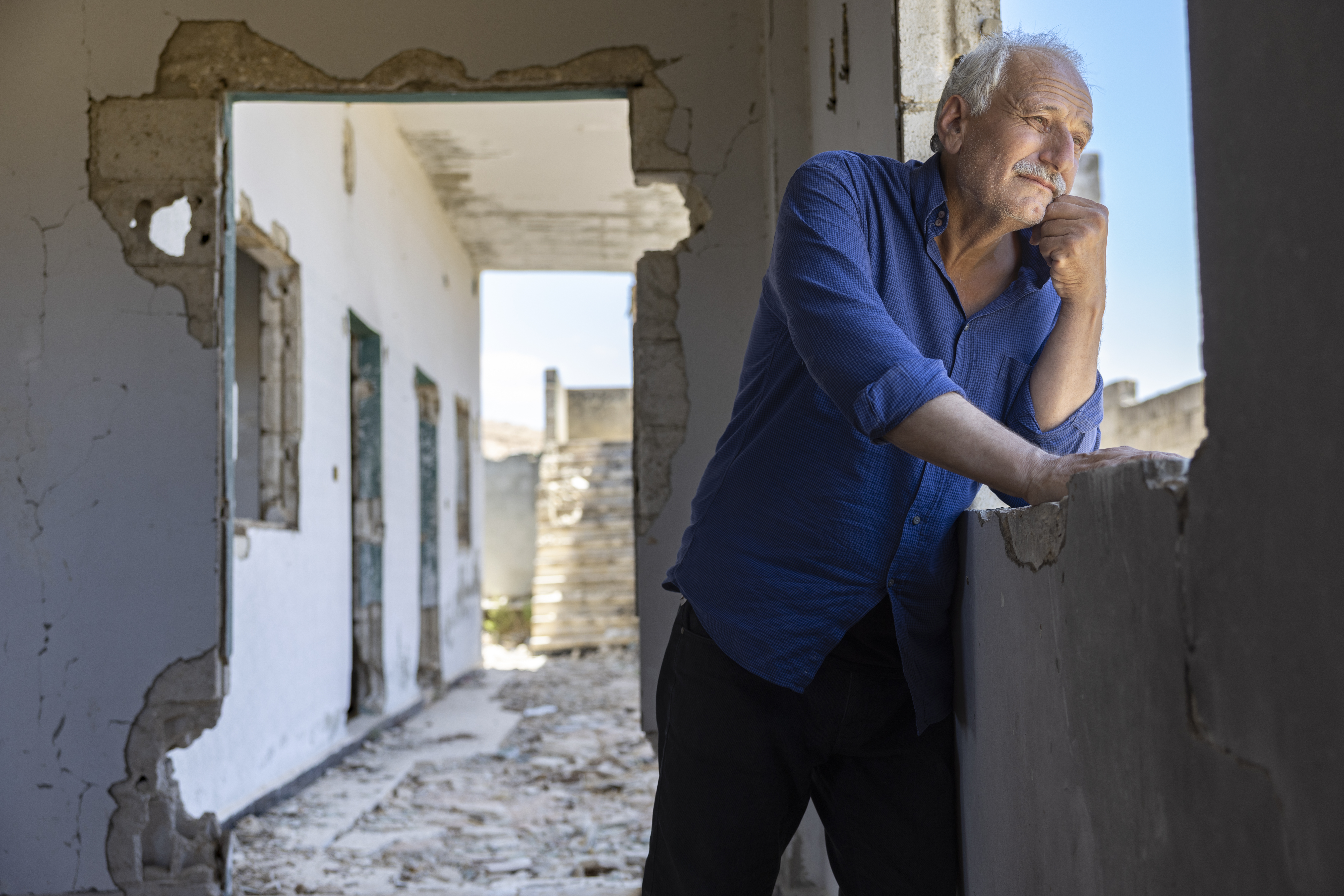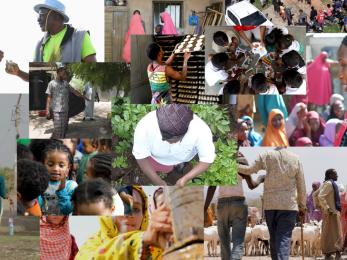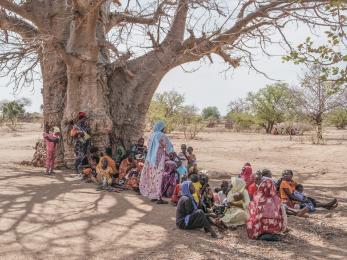From the field: An update on the threat of famine in Africa and Yemen
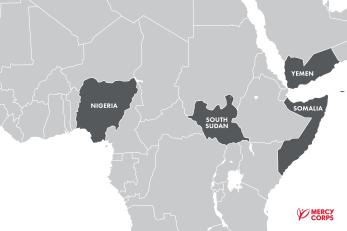
For nearly a year, relentless conflict and natural disaster have put more than 20 million people in four countries across Africa and the Middle East at risk of starvation. For just as long, Mercy Corps has been dedicated to helping people in the hardest-hit communities survive, meet their emergency needs and build a foundation for eventual recovery.
Below, Mercy Corps team members from each of the famine-threatened countries — South Sudan, Somalia, Yemen and Nigeria — report on the current situation, and what more needs to be done.
South Sudan
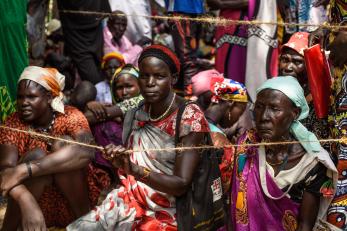
Earlier this year, the United Nations declared a famine in parts of South Sudan, the first anywhere in the world in six years. While the country is no longer technically experiencing a famine, ongoing conflict continues to fuel displacement, loss of livelihoods and severe malnutrition. Our acting country director for South Sudan, Francesco Lanino, provides an update.
What is the food crisis like right now?
South Sudan entered the harvest season in September 2017 with 6 million people — 56 percent of the total population — estimated to be severely food insecure. Even though post-harvest gains are expected to reduce this number, an anticipated earlier than normal start of the lean season [when people run out of food before the next harvest] will result in an estimated 5.1 million people being classified as severely food insecure between January and March of 2018. Humanitarian assistance is critical in averting the situation deteriorating to catastrophic levels.
In the worst-case scenario — given the severity of the food security and nutrition situation observed during the 2017 lean season — continued conflict, humanitarian access constraints, climatic shocks and economic instability leading up to the 2018 lean season will likely result in famine conditions in multiple locations across South Sudan.
How is Mercy Corps planning to continue responding?
Mercy Corps will keep providing support to the most vulnerable South Sudanese. In Mundri East, where Mercy Corps distributed seeds and tools, our farmers managed to harvest enough to cover the food needs for the lean season and farm again for the next farming cycle. In Panjiyar, Mercy Corps distributed crops and vegetable kits to every single household, and we’ll continue to support people by delivering new seed kits during the coming lean season. Mercy Corps also distributed fishing kits to each family in Panjiyar, and will deliver training on how to properly dry and store fish.
Mercy Corps’ cash transfers program to support the most food insecure families will continue during the coming season. When the harvested food supplies are depleted during the lean season, Mercy Corps will provide cash assistance to enable people to purchase food supplies in the local market, where traders are also supported by Mercy Corps. And Mercy Corps will be running school feeding programs to guarantee at least 6,000 children get one meal per day.
Because the war is not over, conflicts are now all over the country. Food insecurity could turn into famine and starvation without the needed support.
Why we're not giving up on South Sudan ▸
What do you want the public to know as we move into the new year?
South Sudanese people cannot be abandoned. Support is needed more than ever. In 2018, Mercy Corps will continue enhancing the ability of at least 300,000 of the most vulnerable individuals — this is double the number from last year — to be able to cope with the effects of conflict and disease outbreak, while building resilience. Through this increased resilience, communities will be better able to cope with, adapt to and manage shocks and stresses in the future.
Somalia
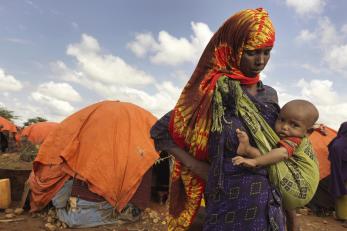
Since January 2017, a dangerous combination of violence and severe drought have forced almost 1 million people to flee their homes, unable to grow food in their agricultural communities. Humanitarian interventions helped avert famine, but drought conditions persist and 3.1 million people still cannot meet their daily food needs. Our country director for Somalia, Abdikadir Mohamud, explains.
How has the food crisis changed in recent months?
The humanitarian response has been very proactive in trying to address the need. There are gaps, definitely, but the situation is not as alarming as before. The rains have just started — although not as strong as expected — but rains are not enough [for people to return to their homes]. The insecurity challenges are there. There is a lot of activity in terms of military and a lot of political instability. What we are finding is that people are going in and out of the camps to go see their places, but there is not much activity in terms of farming.
How is Mercy Corps planning to continue responding?
[We will] continue with provision of basic needs, which are water, rehabilitation of infrastructure — farm infrastructure or agricultural activities — and also trying to see how we can support those in camps. Our team is highly dedicated and committed to moving supplies and other aid services into the communities.
We are talking about, for example, provision of food for school children, and also trucking water to the places that have not seen any rain yet. We are also doing cash-for-work activities so we can inject cash into the markets and the populations, so that they can afford to buy their food in different areas. Those who have severely lost their livestock, we're trying to restock livestock for them, and then also training community animal health workers to provide essential services.
What do you want the public to know as we move into the new year?
What we really need people to know is that the situation is still the same in Somalia. As much as we give it hope, the needs are there. That has not changed. We still require international support. We require regional support. And we also require the public's support to make Somalia stable again.
The picture is that the situation in Somalia is dire, and we really need your support so that the Somali community, and the children of Somalia, can live through this calamity. Hopefully, by the new year, there is rain and people can do their farming. That is when we can talk about trying to see whether we can move people to recovery. Now we are only talking about how to save lives.
Yemen
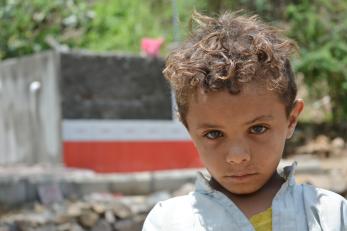
Families in Yemen are in dire need after years of war have crippled the economy, disrupted basic services and made essential supplies like food, medicine and fuel inaccessible. An estimated 17 million people do not have the food they need, and the United Nations reports the country is on the brink of the largest famine the world has seen in decades. Hannah Hilleson, senior program officer for the Middle East, shares more.
What is the food crisis like right now?
The food security situation in Yemen is extremely challenging. As a result of the ongoing conflict, food stores are limited, especially in remote parts of the country. The country imports most of its food, and access constraints into and out of the country limit the availability of nutritious foods.
What's interesting is that while limited, we are still seeing food available in many communities, though at an increased price. Yemen is also suffering from an ongoing banking and liquidity crisis, which means that while food stores may often be available, the average Yemeni may not have enough funds to purchase the food. The situation continues to evolve with the ongoing conflict and we continue to track it closely to ensure we are meeting the urgent needs of those most vulnerable.
Why is it important for people to continue caring about need in Yemen?
Yemen is the poorest country in the Middle East, and was already food insecure before the current conflict. As a result, the ongoing crisis is wreaking havoc on the Yemeni people and creating a number of follow-on effects that will continue to pose challenges for years to come.
For example, less variety and availability of nutritious food reduces a person's ability to combat health related issues. We saw this clearly in 2017, as cholera spread — and continues to spread — across Yemen. Additionally, during times of food insecurity, heads of households are forced to make really tough decisions for themselves and their families, including taking children out of school to reallocate those funds for food and skip or reduce the number of meals they consume.
What motivates you to keep doing this work?
The Mercy Corps Yemen team is absolutely remarkable. Their dedication to bettering their communities and serving those most vulnerable — while they are themselves also facing extreme challenges — never fails to amaze me. They are a constant motivation to do my very best so they can do theirs.
Nigeria
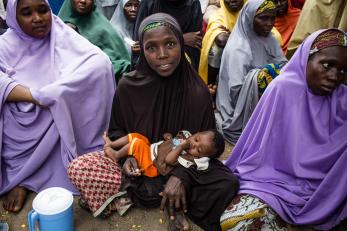
In northeast Nigeria, the home of Boko Haram, violence has uprooted 1.7 million people from their homes and livelihoods, effectively robbing their ability to feed their families. As the Nigerian government has recently regained control of certain areas, it has paved the way for recovery while simultaneously unveiling the scale of need in communities that were previously inaccessible. Darius Radcliffe, our country director for Nigeria, reports.
How has the food crisis changed in recent months?
The big message is famine has been averted as a result of the massive scale-up in humanitarian assistance. In areas where humanitarian organizations have intervened, collectively, they have made a tangible difference.
However, while internal displacement is beginning to curb, food insecurity amongst internally displaced people (IDPs) and host communities remains particularly high: 5.2 million people are still severely food insecure, and 2 million are currently receiving food assistance. Humanitarian access remains a major constraint — some areas facing emergency levels of food insecurity are completely inaccessible due to insecurity and logistical challenges.
How is Mercy Corps planning to continue responding?
The need is still there. There is still a response that is necessary — but it’s a different type of response we’re now looking at. Mercy Corps is continuing food vouchers and distributions to combat food insecurity, but we’re also expanding our approach to include early recovery and resilience efforts. That means supporting livelihood recovery activities and providing agricultural training to allow people and communities to become agents of their own recovery.
We are also expanding our conflict management efforts in the northeast to further strengthen and support communities as they recover from the crisis. We're continually trying to find solutions rather than just deliver humanitarian aid.
Why is it important for people to continue caring about need in Nigeria?
The crisis in Nigeria remains one of the largest humanitarian emergencies in the world. Without food assistance, many millions of people will suffer needlessly, and we risk slipping away from the early recovery seen in parts of the northeast.
In addition, the conflict is not abating. Over 80 percent of Borno state, the state most caught up in the crisis, is considered at high or very high risk. More needs to be done to access these people and assess their needs. And we need to help people affected by the conflict transition from dependence on humanitarian assistance to early recovery. Without these efforts, we risk food insecurity in the northeast becoming a chronic and intractable humanitarian issue for years to come, with significant ramifications for the safety and stability of the entire region.
